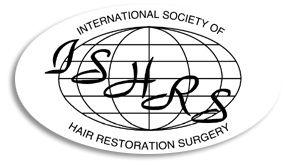The hairs on the sides and the back of your head are not affected by MPB. As a result a hair transplant surgeon can remove donor hair follicles from the sides and back and relocate them on the top of the scalp where hair loss has occurred and the newly transplanted hair will grow exactly as it had from the donor region.
These are some of the most important issues in deciding whether someone is a suitable candidate for hair transplantation.
Step 1: in the hair transplant process is the design of the hairline. The surgeon will sketch a suggestion for placement of the hairline. You are encouraged to participate in this decision process.
Next, the donor area is prepared. Hair in the back is lifted and a narrow strip of hair is trimmed. The hair from above will cover the area after suturing. Both the top and the back of the scalp is then anesthetized. Patients may be given the option of of a sedative while the local anesthesia is applied. This is usually the only discomfort you will feel during the procedure, and lasts only one or two minutes.
Step 2: A narrow strip is removed from the donor area and the skin from above and below are brought back together with a simple running stitch. The stitches are covered by your hair and removed in about ten days, usually leaving a fine scar line that is concealed by your own hair. (It is important to note that if you shave your hair in the donor area the scar line may show.)
From the donor strip, naturally occurring Follicular Units, usually groups of 1-3 hairs, are separated under a microscope to preserve every follicle.
Step 3: The surgeon next creates the sites where the grafts will be placed. Tiny incisions are made at the hairline for the smallest 1 to 3 hair grafts. As the surgeon works back he will place gradually larger grafts containing Follicular Unit Groups. This allows your surgeon to accomplish more density without sacrificing naturalness. During the hair restoration procedure, you will be awake and can chat with the doctor and the staff. Procedure time is usually between 3 to 6 hours and you may eat or drink during the procedure.
When your Hair transplant near me has been completed you will be provided with post-operative instructions, medicines and shampoo. You will leave the office with a little or no bandage and will be able to shampoo your hair the next day.
Most patients resume normal activity in a day or two. Tiny crusts will form where the transplants have been placed and usually shed in 4 to 7 days. The small hairs in the newly transplanted grafts normally shed within 2 to 4 weeks after the procedure, and permanent hair growth begins in 8 to 12 weeks. You should expect significant cosmetic hair growth within 6 months and full hair growth within 9 to 12 months.

Only one or two procedures are usually enough to treat a specific area of hair loss. Potential future hair loss is taken into account when any hairline work is performed. The initial consultation between the patient and surgeon helps to individualize the hair restoration procedure to the patient’s hair quality and density, as well as their expectations of Hair Transplant Pennsylvania.